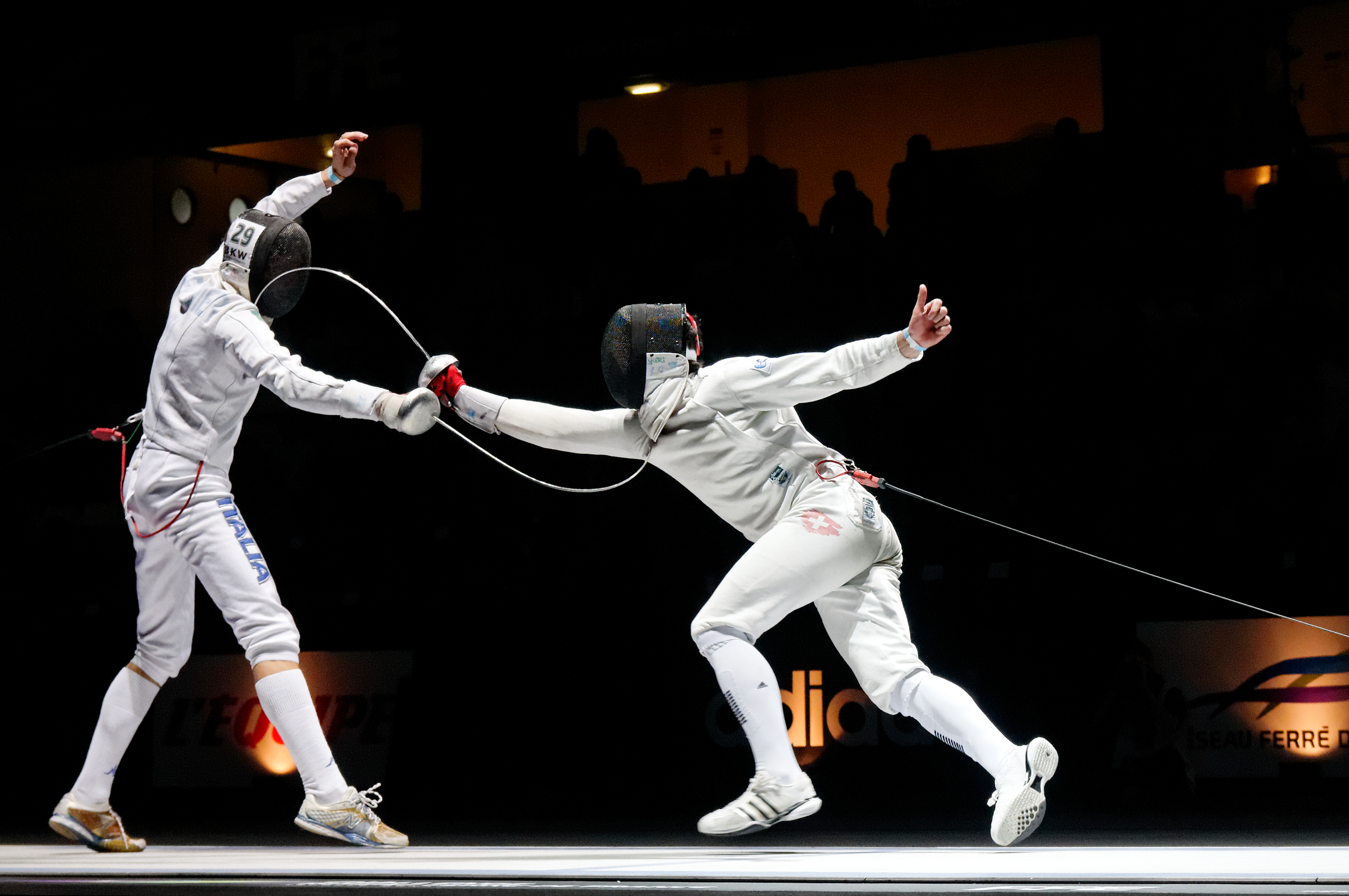Flèche (fencing) on:
[Wikipedia]
[Google]
[Amazon]

 The flèche is an aggressive attacking technique in
The flèche is an aggressive attacking technique in

 The flèche is an aggressive attacking technique in
The flèche is an aggressive attacking technique in fencing
Fencing is a combat sport that features sword fighting. It consists of three primary disciplines: Foil (fencing), foil, épée, and Sabre (fencing), sabre (also spelled ''saber''), each with its own blade and set of rules. Most competitive fe ...
, used with foil
Foil may refer to:
Materials
* Foil (metal), a quite thin sheet of metal, usually manufactured with a rolling mill machine
* Metal leaf, a very thin sheet of decorative metal
* Aluminium foil, a type of wrapping for food
* Tin foil, metal foil ma ...
and épée
The (, ; ), also rendered as epee in English, is the largest and heaviest of the three weapons used in the sport of fencing. The modern derives from the 19th-century , a weapon which itself derives from the French small sword. This contains a ...
.
Background
In a flèche, a fencer transfers their weight onto their front foot and starts to extend the arm. The rear leg initiates the attack, but the ball of the leading foot provides the explosive impulse that is needed to drive the fencer toward the opponent. Continuing to bring the weapon, arm, and front shoulder forward, the fencer picks up their back foot, crossing their front leg, and landing it in front of the other foot - as if taking an exaggerated walking stride. It is at this point, when the back foot lands and just after that arm has become fully extended, that the hit should be made. In foil, the attack is considered over when the back foot lands, and the opponent can seize right-of-way by initiating an attack. After attempting the hit, the fencer continues to move forward, running past their opponent, to avoid theriposte
In fencing
Fencing is a combat sport that features sword fighting. It consists of three primary disciplines: Foil (fencing), foil, épée, and Sabre (fencing), sabre (also spelled ''saber''), each with its own blade and set of rules. Most ...
if he or she was parried, or a counterattack. If the fencer moves past as quickly as possible, the opponent generally only has one chance to hit the fleching fencer as they pass. Rules prevent body contact with the opponent in foil. Infraction of the rule may result in a warning, awarding a touch to the opponent, and/or expulsion from the competition. In épée, contact merely results in a stopping of play without penalty, unless it was done with jostling, brutality, or to avoid being hit.
The flèche involves speed and an element of surprise. The flèche is absolutely not a charge down the piste
A ''piste'' () is a marked ski run or path down a mountain for snow skiing, snowboarding, or other mountain sports.
This European term is French
at an opponent at distance. The flèche utilizes timing, not distance, so the distance shouldn't be greater than a step-lunge.
The flèche is only used in foil and épée. In sabre
A sabre or saber ( ) is a type of backsword with a curved blade associated with the light cavalry of the Early Modern warfare, early modern and Napoleonic period, Napoleonic periods. Originally associated with Central European cavalry such a ...
, it is forbidden for the back foot to pass in front of the front foot, outlawing the flèche.
The flèche is not allowed in some types of tournaments, especially in high school fencing. For example, the flèche is forbidden in New Jersey interscholastic fencing.
History
The term '' flèche'' is a French term meaning "arrow," referring to the surprising style of the attack. Under FIE rules it is illegal for a sabreur to cross his or her legs, making the flèche illegal. Sabreurs can instead use a ''flunge'' — aportmanteau
In linguistics, a blend—also known as a blend word, lexical blend, or portmanteau—is a word formed by combining the meanings, and parts of the sounds, of two or more words together.
of ''flying'' and ''lunge'' — where a lunge (generally cutting to head) is made with a leap to give speed and close the extra distance.
References
{{DEFAULTSORT:Fleche Fencing